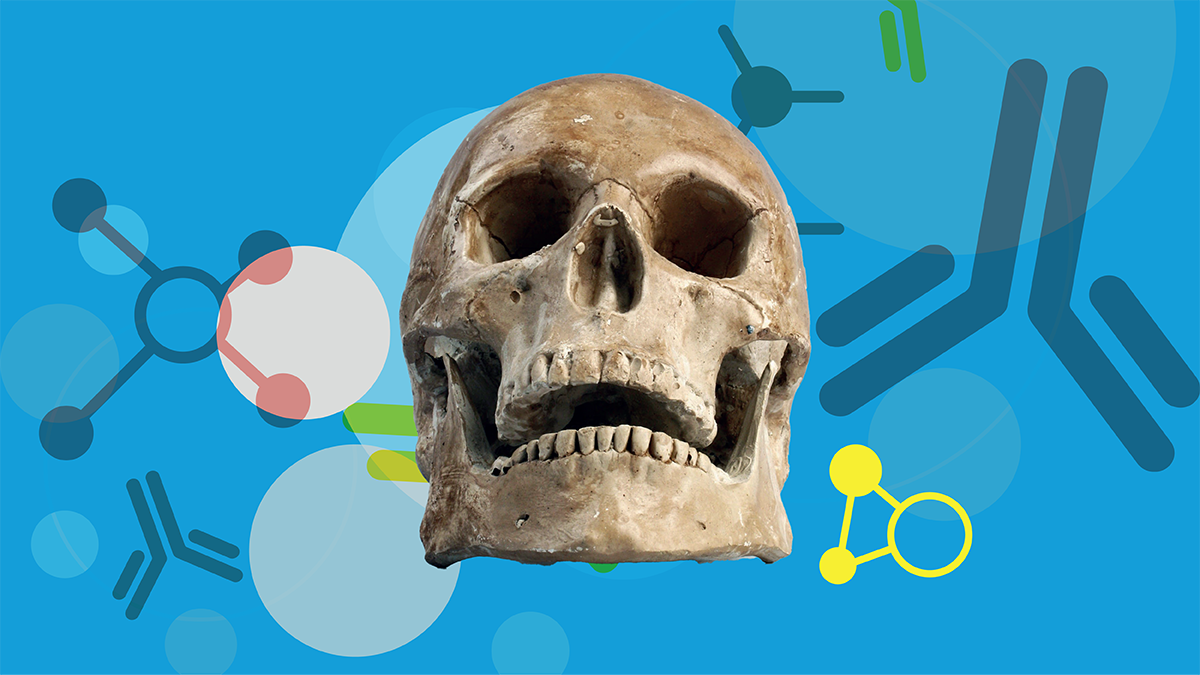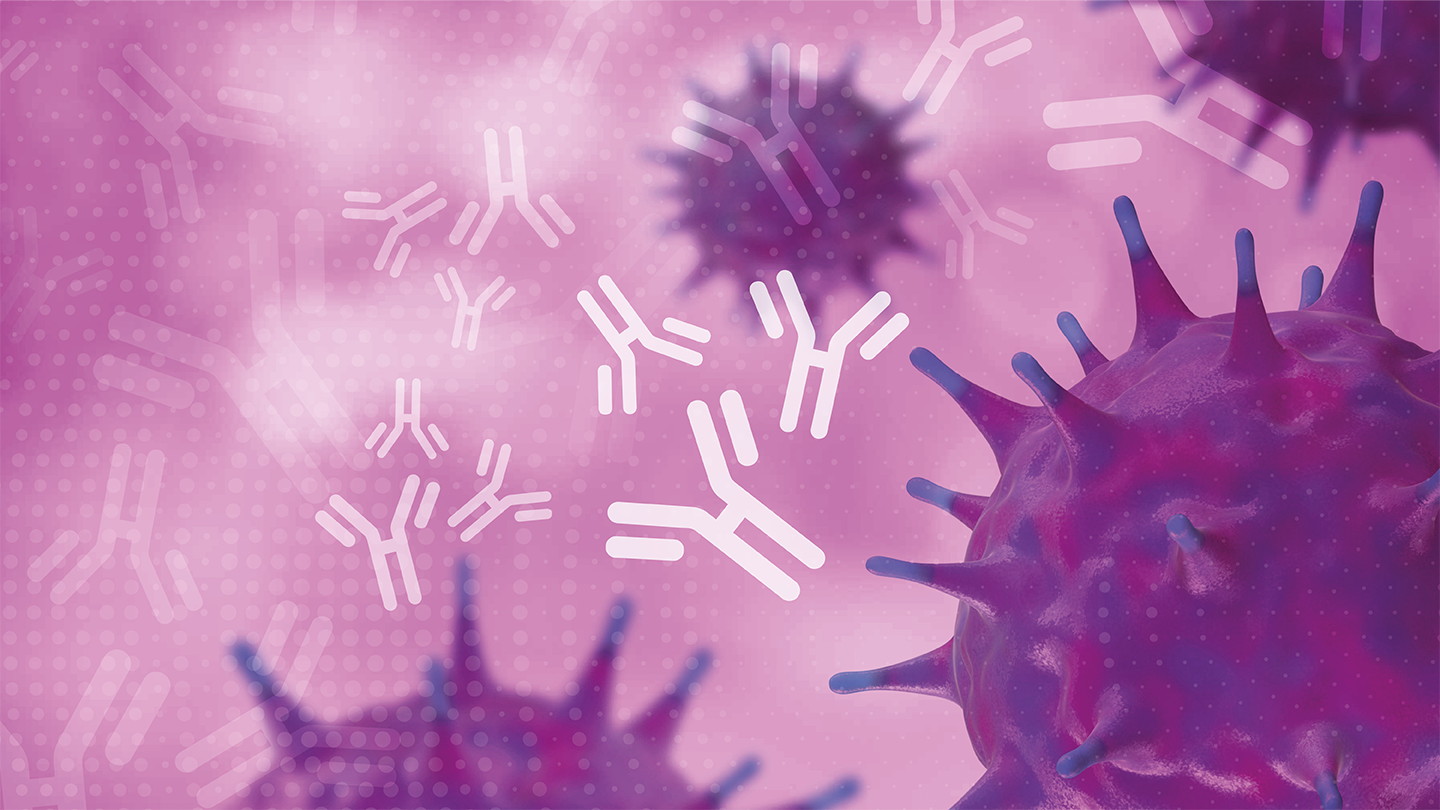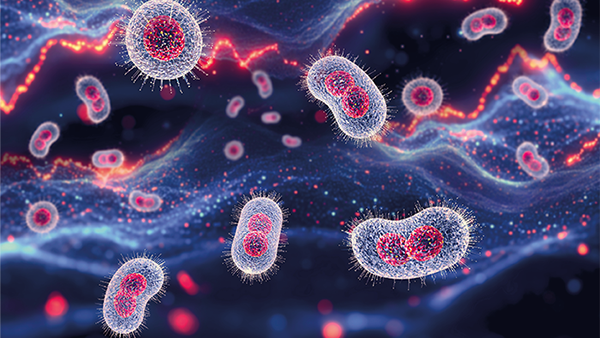The Tooth Holds the Truth
Scientists have successfully extracted whole, intact antibodies from medieval human teeth with immune reactivity to a modern Epstein-Barr virus antigen
Paleoproteomics – the study of ancient proteins – is a rapidly growing field. Analyzing ancient DNA has so far been more popular for investigating the history of disease because it can provide more information on a genome-scale; however, ancient proteins are more stable in microenvironments where ancient DNA may degrade. Furthermore, using mass spectrometry to detect ancient proteins does not rely on amplification, which reduces the risk of contamination.
Studying ancient immunity can help us to understand the history of immune responses to pathogens and how these have changed throughout history. So far, scientists have found human antibody peptides from bone, but haven’t studied them in much detail. Others hoped they could find well-preserved antibodies with immune reactivity from calcified tissues, but a recent analysis of various methods for extracting ancient human IgG protein showed this may not be possible; poor recovery, degradation, and unsuitability as targets for detecting historical antigens muddy the waters (1). But now, these shortfalls have inspired a new study by researchers from the University of Nottingham and University College London, who wanted to further explore the preservation of the molecular memory in ancient antibodies (2).
“Previous studies detected antibody reactivity, but there was skepticism in the field, with other work concluding poor preservation of antibodies,” says Robert Layfield, senior author on the current study. “Prior studies unsuccessfully trialed thiophilic adsorption chromatography – a ‘gentle’ affinity resin method for purification of IgG that avoids harsh elution conditions for purified antibodies. We applied a straightforward protein G affinity purification step with acid elution – and we are the first to purify and analyze whole ancient antibodies.”
They found whole, intact, disulphide-linked antibodies from 800-year-old human teeth. “Presumably these come from blood that was preserved within the teeth. This was a surprise as other studies had concluded poor antibody preservation,” says Layfield. Further analysis showed that these antibodies could recognize modern germs – exhibiting immune reactivity against a contemporary Epstein-Barr virus antigen on western blot. “We also performed an exploratory analysis of a 40,000 year old mammoth femur bone and found that whole antibodies also seem to be preserved here.”
The findings have implications for our understanding of the history of immunity, particularly in the pre-antibiotic era. “There is potential for new insights into the long-term association between host immune factors and ancient environmental microbes or changing environments – and, more broadly, the natural history of human health and immunity, including autoimmunity,” explains Layfield. He notes that the methods developed should allow them to study the similarities between ancient and contemporary antibodies. “Analyzing samples from other skeletons could allow us to see how antibodies to Yersinia pestis (which caused the Black Death) varied over time.”
There are all sorts of potential possibilities, Layfield continues: “One might predict that antibodies from Native American skeletons pre-Christopher Columbus would have no antibodies to smallpox, but that these would start appearing at some time after contact with Europeans. Moreover, samples from the time of the Plague of Athens described by Thucydides may allow us to find out whether it really was typhoid, as has been suggested.”
Reference
R Kendall et al., “Poor preservation of antibodies in archaeological human bone and dentine,” Sci Technol Archaeol, 2, 15 (2016).
B Shaw et al., “Preservation of whole antibodies within ancient teeth,” iScience, 26, 107575 (2023). PMID: 37622005.





